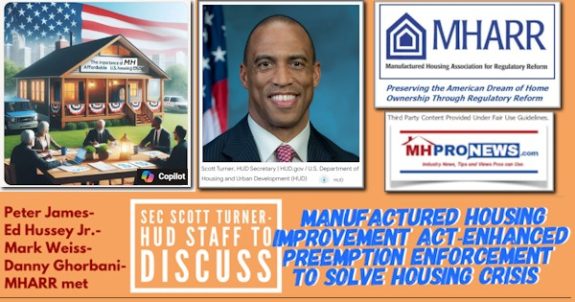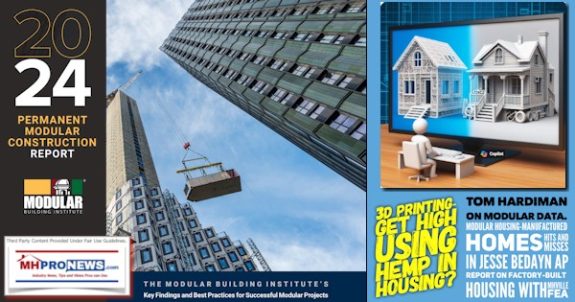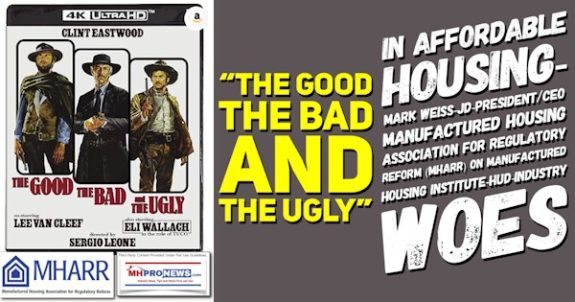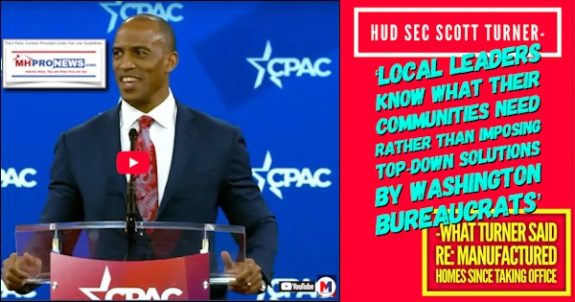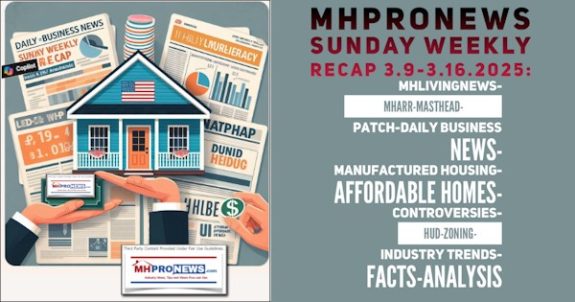
2014 Election Recap and Financial Services Outlook for the 114th Congress
by Lendell Porterfield, CEO, Porterfield, Lowenthal, Fettig & Sears, LLC
Note about the Author: Lendell Porterfield is CEO of Porterfield, Lowenthal, Fettig and Sears LLC, which serves as MHI’s external lobbying firm. He previously served as Senator Shelby’s Banking Committee adviser from 1995 – 2001. He was the lead Republican Committee staffer on the Manufactured Housing Improvement Act of 2000.
The Midterm elections confirmed what pollsters have been telling us for months: a negative political environment for Democrats, coupled with economic and national security concerns, translated to historic gains for Republicans and devastating losses for Democrats in both the Senate and the House. With Louisiana headed to a runoff, Republicans have won the majority for the 114th Congress. This means Republicans will drive the Senate agenda for the next two years and, given the results, will be emboldened to move legislation and force President Obama to sign or veto legislation. As a general theme, we expect the Republican House and Senate to push back hard against what many perceive as President Obama’s overly aggressive and burdensome regulatory agenda. An overview of the election results include:
- Topline Takeaway: Republicans have taken control of the Senate and strengthened control of the House. By controlling both chambers for the first time since 2005-2006, Republicans will be better positioned to push back on regulatory initiatives as well as pass somesubstantive Dodd-Frank changes. We expect more oversight and investigative hearings into industry activities and agency actions.
- Republicans Take Senate Majority: Senate Republicans gained at least eight Senate seats, two more than needed to win the majority. Louisiana will go to a runoff December 6th. Virginia and Alaska may endure recounts. Republicans exceeded most everyone’s expectations. It was a wave.
- Republicans Maintain House Majority: At the moment, it appears Republicans gained a net of 14 seats and counting to maintain the House majority with 246 seats, its largest majority since World War II.
- Lame Duck: Expected action: CR, TRIA reauthorization, insurance capital standards, tax extenders, Defense Authorization Act and judicial nominations.
click here to read more
MHI Leadership Yields Positive Results for Industry in Energy Efficiency Standards
Concluding a three month, intensive negotiation process, the Department of Energy (DOE) ASRAC (Appliance Standard Rulemaking Advisory Council) Working Group on Manufactured Housing successfully reached a consensus recommendation for updated energy efficiency standards for manufactured housing. In an almost unanimous (20-to-1) vote, the working group developed a recommendation to meet a mandate outlined in the 2007 Energy Independence and Security Act (EISA) for DOE to establish energy efficiency standards for manufactured housing based on the most recent version of the International Energy Conservation Code (IECC).
DOE undertook a consensus approach to develop standards after an unsuccessful attempt to publish its own proposed rule that was strongly opposed by MHI as being too costly, technically deficient and lacking industry input. DOE was further motivated to take action when Congressional Appropriators passed a directive, supported by MHI, that DOE consult with HUD, the MHCC and the industry in setting new energy standards for manufactured housing. Lastly, several energy conservation groups were threatening DOE with a lawsuit if it did not take action to propose a rule.
Throughout the negotiations, MHI members serving on the committee tenaciously argued for an approach that equitably balanced reduced energy costs against added first cost. Industry representatives made a strong case for basing economic decisions on the perspective of buyers with an average ownership term of ten years, rather than a thirty-year life cycle; the latter approach would have resulted in greater efficiency but at a much higher home cost.
Additionally, MHI with technical support from the Systems Building Research Alliance (SBRA), successfully argued for maintaining three climate zones as opposed to the seven in the IECC (the 2015 IECC was the starting point for negotiations). Further, the zones proposed are divided mainly along state lines as opposed to the county boundaries used in the IECC-manufacturers often do not have specific site information prior to home construction.
When negotiations on the rulemaking began in August, it became evident that the representative from the Manufactured Housing Association for Regulatory Reform (MHARR) would not provide any substantive feedback, opposed the law and, while present at the meetings, would not actively participate in consensus negotiations. While they criticized data provided by MHI, MHARR was repeatedly asked by DOE and ASRAC participants to provide cost data, but failed to provide anything other than anecdotal and unsubstantiated information.
It is critical to note that had MHI not worked collaboratively with regulators and energy advocates to reach a consensus, DOE would have been obligated to promulgate a standard that would have had a dramatic cost impact without regard to industry or consumer concerns. MHI’s ability to productively contribute to the process meant that it was able to most effectively ameliorate the impact of a potentially debilitating rulemaking.
MHI members and SBRA staff developed data, conducted analysis and promoted outcomes that would be most beneficial to the overall industry and homebuyers. The final result is recommendations that are reasoned, substantiated, fair, equitable and forward looking.
Another positive outcome is an offer by DOE to work with industry to develop software that facilitates the process of designing new homes and checking for code compliance (similar to ResCheck software used by many modular and site builders). The software would combine in a single application a range of functionality formerly available only from separate procedures and methods.
While the new proposed energy efficiency standards will increase first costs, consumers will realize significant energy cost savings. The impact will be lower monthly net costs and improved affordability, a win-win for our homebuyers and the environment. Increased construction costs will vary by region, manufacturer and home design.
The Working Group’s recommendation will be presented to the Secretary of Energy who will very likely endorse it as proposed. The recommendations will then be developed into a proposed rule which will go to the White House Office of Management and Budget for a 90-day review. The proposed rule will then be published in the Federal Register in early 2015 and be subject to public comment. It is anticipated that a final rule will not go into effect until 2016.
A key next step is for DOE to develop a process for enforcement and monitoring. In order to prevent duplicative enforcement mechanisms, MHI will be urging the agency to utilize the existing HUD inspection and enforcement framework.
Highlights of the Working Group’s recommendations are below. Note, these recommendations must still be approved by DOE, OMB and are subject to public comment.
- Two compliance options, prescriptive or performance
- Three new thermal zones, closer to the current HUD zones than the IECC zones
- Minimum window U-values and SHGC values
- Lower U-values (higher thermal requirements) which are different for single-section and multi-sections.
- Duct tightness testing required on each house
- No blower door tests, visual inspections allowed.
- All penetrations are to be sealed (windows, doors, walls, floor and ceiling)
For more information, contact MHI Vice President of Regulatory Affairs Lois Starkey at (703) 558-0654 orlstarkey@mfghome.org.
MHI CFPB and Financial Services Updates
November 18th: CFPB and Fed to Host TILA-RESPA Disclosure
Webinar
On November 18th, the CFPB and the Federal Reserve will
co-host the fourth in a series of FREE webinars on the TILA-RESPA integrated mortgage loan disclosures rule. The webinar will focus on how to complete the new closing disclosure form. Click here to register.
Click here to read more MHI CFPB and Financial Services Updates.
Government and Political News from Around the Nation
All 50 States – For state-by-state budget reviews, click hereto view the analysis by MultiState Associates.
Alabama – House Speaker Mike Hubbard (R) faces up to 20 years in jail after being indicted on 23 felony corruption charges. Prosecutors allege Hubbard solicited gifts from lobbyists and used his office for personal gain. Hubbard claims innocence and says he is the victim of a political witch hunt. Click here to read more.
Colorado – Gov. John Hickenlooper (D) unveiled his 2015 budget proposal. The $26.8 billion budget increases current spending levels 7 percent. Click here to read more.
North Carolina – Gov. Pat McCrory (R) is reassessing his position on an expanded Medicaid program. Former Speaker and current U.S. Senate candidate Thom Tillis (R) agrees that lawmakers should take the issue up in 2015, but Senate President Phil Berger (R) remains staunchly opposed. Click here to read more.
Pennsylvania – The House and Senate both wrapped up work for the year. Both chambers reconvene on Nov. 12th to organize for 2015. Click here to read more.
South Carolina – Currently suspended House Speaker Bobby Harrell (R) is expected to plead guilty to corruption charges and resign from the House. Harrell served 21 years in the House. Click here to read more.
All 50 States – Bill prefiling deadlines have been added to MultiState’s 2015 Legislative Session Deadlines chart. The chart also contains bill introduction and crossover deadlines, as well as session start and end dates. Click here to read more. ##







